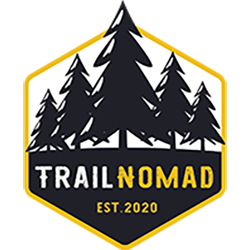Explained
Snorkels
Protect your engine from dust and water. A 4×4 snorkel raises the level of your vehicle’s air intake to minimise the chance of water or dust entering your engine. It transfers the air intake from under your bonnet to roof height, providing your vehicle with cleaner, fresher, closer air. You get maximum engine protection and less likelihood of engine damage and vehicle breakdown.
Advantages of a snorkel:
- Protects your engine from deep water/river crossings
- Protects your engine from dust and dirt in outback conditions
- Maintains fresh air for your engine
- Removes rain from incoming air stream
We currently sell two brands of snorkels, Safari snorkels and Bravo Snorkels, we’ll share a bit more about their features below.
Safari snorkel
Features:
- Ingenious design: Safari’s Air Ram system is designed to simultaneously remove the maximum volume of water from the incoming air stream, while delivering the maximum airflow to your vehicle’s engine.
- Durable materials: Safari snorkels utilise a UV-stable polyethylene body, which ensures a strong and robust fitting to the outside of your 4×4. Corrosion-resistant, stainless steel-plated hardware on all internal and external fittings and fixtures completes the treatment.
- Vehicle specific: Nothing fits like Safari. As a result of an intricate design process, Safari snorkels are manufactured to integrated seamlessly.
Which Safari snorkel is right for you?
Safari manufactures three types of snorkel: ARMAX, V-Spec and R-Spec.
ARMAX
Safari’s top-of-the-range, performance oriented Safari snorkel is designed for serious 4WD owners and those who travel off road in dusty, wet conditions:
- Lifetime warranty
- Developed to flow 30 per cent more air than the OE air intake system
- High-flow air ducting and body ensures air supply is in excess of engine requirements
- Every component designed for maximum dust and water sealing • Stainless steel-plated hardware for corrosion resistance
- Unique water separating Air Ram effectively disperses rain and unwanted moisture
- Works in tandem with other performance modifications
- Created from industrial spec UV-stabilised polyethylene
V-Spec
The traditional Safari snorkel range:
- Suits popular current model vehicles
- Lifetime warranty
- Created from industrial spec UV-stabilised polyethylene
R-Spec
For the budget-conscious 4WDer:
- Suits older model vehicles
- Five-year warranty
- Created from recreational spec UV-stabilised polyethylene
Bravo Snorkel
Features:
- Dusty environments: filter kept clean, fuel savings, engine durability
- Water wading: higher wading capacity, engine protection, route safety
- Everyday use: increased intake flow, cleaner and fresher air, improved performance
- The snorkels include a manufacturer’s certificate guaranteeing compliance with EC legislation, along with an additional certificate issued by an authorised external engineering company.
Specifications:
- Snorkel: comprises a single piece of thick polyethylene manufactured using rotational moulding technology, offering optimal toughness and durability. ExxonMobil™ LLDPE 8446.21 series high-end LLD polyethylene with a density of 0.936 g/cm³according to the ISO 1183 test standard.
- Head: high-flow design for top performance, with water drainage slots. Single-piece unit made from ExxonMobil™ LLDPE with detachable grille. Available for snorkels with 89 mm (3.5”) and 77 mm (3”) diameters.
- Ducts: included in all the kits, capable of withstanding high temperatures and pressure, ensuring optimal air flow to the engine. Manufactured in PP, LLDPE, EPDM… depending on the configuration and applications of each kit for a tight and precise fit.
- Fasteners and fixings: nuts and bolts: 316 and 304 series stainless steel, with self-locking nuts for secure installation. Plates: tight fit, manufactured in laser-cut, surface-treated alloys. Nylon plugs: firm grip, isolating the plate from the bodywork to prevent vibration and corrosion.
- Templates: model-specific template included in each box with instructions for positioning and drilling of bodywork. Other templates can be included if needed for installation.
Why do some snorkels face backwards
While the snorkel has the ram effect, some drivers have opted to face the snorkel’s grid the opposite direction.
This seems to be in more extreme conditions of severe dusty roads, heavy tropical rains or heavy snow – enough snow could block the intake grid and starve the engine of air – but generally the snorkel is best placed forward.
Maintenance
Off-road adventures and excursions, whether it’s a leisurely weekend trip or a more intrepid adventure, usually mean adapting the capacity of your off-road vehicle. The priority is to increase capacity and autonomy while offering excellent road safety, essential when taking on any sort of off-road challenge. The snorkel will also increase performance in your everyday road journeys.
Keeping the filter in perfect condition ensures fuel savings while maintaining performance, which can be increased by installing a snorkel, thanks to the fresh air and increased air flow with which it provides the engine.
Although the snorkel lengthens the life of an air filter, the original configuration of the filter should be maintained and we always recommend sticking to the service schedule recommended by its manufacturer.
In off-road use, vehicle filters are exposed to a much greater load than in standard road use, which means the heart of your off-road vehicle requires the best care.

